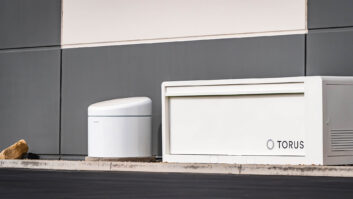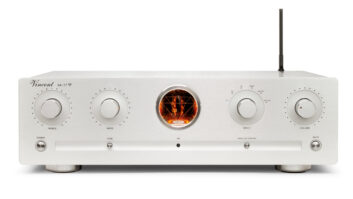Everyone knows that the more organized you are, the better your chances of making a profit. Run a tight ship, and eventually it will be smooth sailing.
While this theory applies to the custom installation market, those working in the production home environment–where the sheer number of installations increases exponentially by comparison–couldn’t take it more to heart. Efficiency, in this world, is everything.
“It requires a discipline that isn’t always necessary with a single-home installation,” said Eric Smith, chief technology officer at control systems manufacturer Control4. “If you are bidding on an entire complex, they are going to want some kind of price break for giving you the volume; it’s standard practice. It requires more discipline to get in and get out and make money on each job. It’s often the replication of the same thing, over and over again, but it does require you to be tight about managing time.” Smith notes that manufacturers like Control4 offer special programs to dealers that are involved in production home contracts.
“Production contracts are different in that you really must have your processes and efficiencies running at top notch or you don’t make any money,” declared Phil Barrick, president of PBC Technologies Inc. (www.pbctech.com), in San Diego, California. Focused on the residential market, the bulk of PBC’s contracts are for production homes.
“You must have a clear set of processes in place, and you must have a well-organized team,” Barrick said. “In the custom environment, a large custom installer may do 100 installs a year, whereas a production installation company may do 4,000 installs per year.” With this in mind, companies like Barrick’s must implement effective systems for back-room business management, scheduling, ordering materials, and interacting with builders.
As organized as a company may be–and as demanding as the production market is–the same scheduling challenges that apply to the custom installation industry are also prevalent in this arena. “Sometimes, up to 20 percent of the jobs that are scheduled for the day by the builder and their site supervisor that is in charge of the subdivision are not ready for us when they are scheduled and when we show up,” said Dennis Sage, president of Dennis Sage Home Entertainment (www.dshe.net), in Phoenix, Arizona.
To counter this, one staff member dedicates a portion of each day confirming the status of each job site, although this isn’t a cure-all. “Oftentimes, they will confirm that it’s ready, but when we show up to the job it’s not ready, and we can’t wire the house,” Sage explained. “We have driven 45 minutes to the job site, we show up and find that it’s not busy, so we must call into the office so that it can be rescheduled. We have lost all of that production time, which is so crucial. That’s an hour out of my installer’s day that is not revenue-producing.”
The most significant difference between custom installation and the realm of production homes is to whom one ultimately answers. In the custom environment, installation firms deal directly with homeowners. With production projects, the builder is the client, with the homeowner involved, as well.
“Production builders all have different ways of doing and offering what we do for a living,” Sage added. “Some builders tell us exactly what we will do to get their business; others give us a little more leeway. They have strict schedules, they have strict bookkeeping, and strict ways of dealing with their options and how it’s done.”
Custom installers, by virtue of the fact that they “customize” each system, accommodate for multiple change orders. “With custom, it’s the complete opposite because we are dealing with the customer and they are able to change things as often as they possibly can,” Sage said. “They can change their schedule, they can add and delete things. With production homes, customers usually have about two weeks to decide what they want to put in their home. Once they find what they want, they can’t change anything.”
Barrick notes that today’s technology has resulted in a more sophisticated production environment. “The misconception that I still think is somewhat out there is that the production installer is taking the low hanging fruit; they are the bottom feeders of the industry,” he said. “It’s really evolved from that, with the technology that is available, and with the lifestyle enhancements that are out there for homebuyers.”
With the continually decreasing costs of high technology, those who are in the market for a production house–rather than a custom-built home–have access to these systems, driving the need for firms that specialize in the integration of audio, video, and control technologies.
“The residential market has evolved from the installation of higher grade telephone and cable TV wiring into a home to installing lighting systems, thermostats and alarm systems that can be controlled from anywhere in the house,” Barrick observed. “More technology is available, and it’s becoming more cost effective and is more reasonably priced and affordable for first and second-time homebuyers to purchase.”
Smith points out that A/V installers are the homebuilders’ keys to differentiating themselves from the competition, as well as up selling. “For builders, the time value of money is a very important thing–to move those houses faster and have the ability to differentiate their community so that people are willing to come and buy homes from them,” he said. “Also, people spend tens of thousands of dollars in conjunction with the closing of their house. Developers and builders would like to see more of those dollars go through them rather than through local electronics and furniture stores.”
With this in mind, A/V installers can pave the way to the standardization of high-tech systems in production homes, notes Ari Supran, marketing manager for residential systems at Lutron. “There are several technologies–central air comes to mind–that were not standard at one time, and now they are,” he said. “I believe that structured wiring is on its way, and I think that lighting control is the next standard in production homes. If we can get just some amount of lighting control into the home as a standard, homeowners will start to ask for what else they can do in terms of controlling both the electric and natural light in the home. This can be a revenue source not only for the integrator, but for the builder as well.”
Carolyn Heinze ([email protected]) is a freelance writer/editor.






